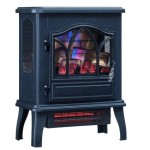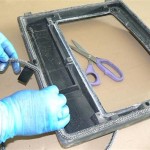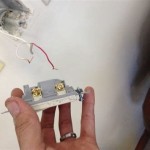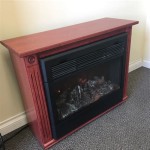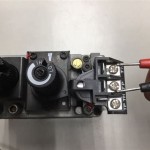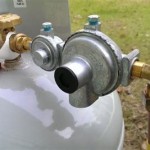Understanding the Gas Fireplace Log Lighter Escutcheon
The gas fireplace log lighter escutcheon, often overlooked, is a crucial component in a gas fireplace system. It serves both a functional and aesthetic purpose. Functionally, it provides a secure and safe point of connection for the gas supply line leading to the log lighter. Aesthetically, the escutcheon covers the often unsightly piping and connections, offering a cleaner, more finished look to the fireplace hearth.
The escutcheon, typically a decorative plate or flange, is installed around the gas supply pipe where it enters the firebox. It is designed to conceal the raw edges of the firebox opening and any associated plumbing, creating a more seamless integration of the gas line with the fireplace surround. The materials used for escutcheons vary, ranging from cast iron and brass to stainless steel and various alloys, each offering different levels of durability and aesthetic appeal. Understanding the role and characteristics of the log lighter escutcheon is essential for maintaining the safety and appearance of a gas fireplace.
Key Point 1: Functionality and Safety
The primary function of the gas fireplace log lighter escutcheon is to ensure a safe and secure connection for the gas supply line. Without a properly installed escutcheon, the gas line may be vulnerable to damage from heat, impact, or corrosion. The escutcheon acts as a protective barrier, shielding the connection point from external elements that could compromise its integrity.
A secure connection is paramount for preventing gas leaks, which pose a significant safety hazard. A loose or improperly sealed gas line can release natural gas or propane into the home, leading to potential explosions or carbon monoxide poisoning. The escutcheon, when installed correctly with appropriate sealing compounds, helps to create a gas-tight seal, minimizing the risk of leaks. Furthermore, the escutcheon often incorporates a mounting point or bracket that firmly anchors the gas line to the firebox, preventing movement and reducing stress on the connection.
The design of the escutcheon often includes features that allow for easy access to the gas shut-off valve, which is typically located near the connection point. This accessibility is crucial for quickly cutting off the gas supply in case of an emergency, such as a fire or a suspected gas leak. A well-designed escutcheon will not obstruct access to the shut-off valve and may even incorporate a clear visual indication of its location.
Regular inspection of the escutcheon and the surrounding gas line connections is essential for maintaining safety. Any signs of corrosion, damage, or loose connections should be addressed immediately by a qualified technician. Ignoring these issues can lead to serious safety hazards and costly repairs.
Key Point 2: Aesthetic Considerations
While safety is the paramount concern, the aesthetic contribution of the gas fireplace log lighter escutcheon should not be underestimated. Fireplaces are often focal points in a room, and the appearance of the gas line connection can significantly impact the overall aesthetic. An escutcheon provides a clean, finished look by concealing unsightly pipes and fittings.
Escutcheons are available in a wide range of styles, materials, and finishes to complement various fireplace designs and décor. Options include classic brass, rustic cast iron, sleek stainless steel, and modern minimalist designs. The choice of material and finish should be carefully considered to ensure it harmonizes with the surrounding fireplace surround, mantel, and overall room aesthetic.
The shape and size of the escutcheon also contribute to its aesthetic appeal. Some escutcheons are round, while others are square, rectangular, or even custom-shaped to fit specific fireplace designs. The size of the escutcheon should be proportionate to the fireplace opening and the size of the gas line connection it conceals. A too-small escutcheon may not adequately cover the unsightly components, while a too-large escutcheon may appear disproportionate and detract from the overall aesthetic.
The installation of the escutcheon should be performed with attention to detail to ensure a seamless and visually appealing result. The escutcheon should be flush with the firebox surface and securely attached to prevent movement or gaps. Any exposed edges should be smooth and free of sharp corners. Consider the visibility of the escutcheon from different angles within the room to ensure it maintains its aesthetic appeal from all viewpoints.
Beyond the functional and aesthetic considerations, the escutcheon also plays a role in maintaining the overall cleanliness of the fireplace hearth. By concealing the gas line connections, it prevents dust and debris from accumulating in hard-to-reach areas, making cleaning easier and more efficient. This contributes to a more visually appealing and hygienic fireplace environment.
Key Point 3: Materials, Installation and Maintenance
The material composition of a gas fireplace log lighter escutcheon directly impacts its durability, longevity, and aesthetic appeal. Common materials include cast iron, brass, stainless steel, and various alloys, each with distinct characteristics.
Cast iron escutcheons are known for their durability and rustic aesthetic. They can withstand high temperatures and are resistant to corrosion, making them a suitable choice for fireplaces that experience frequent use. Brass escutcheons offer a classic and elegant look. They are relatively resistant to corrosion but may require occasional polishing to maintain their shine. Stainless steel escutcheons provide a modern and sleek aesthetic. They are highly resistant to corrosion and easy to clean, making them a popular choice for contemporary fireplace designs. Alloy escutcheons, often composed of a blend of metals, offer a balance of durability, aesthetics, and cost-effectiveness.
Proper installation of the gas fireplace log lighter escutcheon is crucial for ensuring both safety and aesthetic appeal. The installation process typically involves several steps, including preparing the firebox opening, applying sealing compounds, and securing the escutcheon to the gas line and the firebox. It is recommended that installation be performed by a qualified technician to ensure compliance with local codes and regulations. Always consult the manufacturer's instructions for specific installation guidelines.
Maintenance of the gas fireplace log lighter escutcheon is relatively straightforward. Regular cleaning with a mild detergent and water is typically sufficient to remove dust and debris. For brass escutcheons, occasional polishing may be necessary to maintain their shine. Inspect the escutcheon periodically for signs of corrosion, damage, or loose connections. Any issues should be addressed promptly by a qualified technician.
Furthermore, it's important to consider compatibility when replacing an existing escutcheon. Ensure that the new escutcheon properly fits the existing gas line connection and the firebox opening. Consult with a qualified technician or the fireplace manufacturer to determine the appropriate replacement escutcheon for your specific fireplace model. The chosen escutcheon must meet all applicable safety standards and regulations.
Understanding the materials, installation process, and maintenance requirements of a gas fireplace log lighter escutcheon is essential for ensuring its long-term performance and aesthetic appeal. Properly maintaining this seemingly small component significantly contributes to the safety and beauty of the entire fireplace system.
The selection of the appropriate escutcheon should also take into account the type of gas used in the fireplace. Natural gas and propane have different properties and requirements. Using an escutcheon not rated for the specific gas type used in the fireplace can create a safety hazard. Always verify that the chosen escutcheon is compatible with the type of gas being used.
In addition to the material and style, the overall design of the escutcheon can also impact its performance. Some escutcheons feature ventilation holes or slots to allow for proper airflow around the gas line connection. This ventilation can help to prevent heat buildup and reduce the risk of corrosion. Other escutcheons may incorporate a built-in gas shut-off valve for added safety and convenience.
When replacing an escutcheon, it is important to thoroughly inspect the surrounding gas line connections for any signs of damage or wear. Any damaged or worn components should be replaced at the same time to ensure a complete and reliable repair. Additionally, consider upgrading the gas line and connections to newer, more efficient models to improve the overall performance and safety of the fireplace system.
Finally, remember that the gas fireplace log lighter escutcheon is just one component of a complex system. Regular maintenance and inspection of the entire fireplace system, including the logs, burner, and venting, are essential for ensuring its safe and efficient operation. Consult with a qualified technician to schedule regular maintenance and inspections to keep your fireplace in optimal condition for years to come.

Qb Llcr Quarter Ball Universal Gas Log Lighter Valve W Key Nut Chrome Escutcheon

What Is A Gas Fireplace Escutcheon

Gas Fireplace Starters Log Lighter Universal

58 Ang03 Matco Norca 1 2 Angle Log Lighter Valve W Chrome Plated Escutcheon

Prier 3 Way Log Lighter Valve With Escutcheon Key C 64 Big Frog Supply

Cast Iron Log Lighter 12 Inch For Natural Gas

How To Install A Log Lighter Fireplace Gas Starter Pipe

Pacific Plumbing Supply Company 1 2 Fip Straight Gas Log Lighter Valve W Chrome Key

Pro Flex Hearth Master Valve Kit Straight Brushed Nickel Finish Key And In The Gas Fireplace Log Accessories Department At Com

58 Log Lighter Gas Valve Complete Kit
Related Posts

